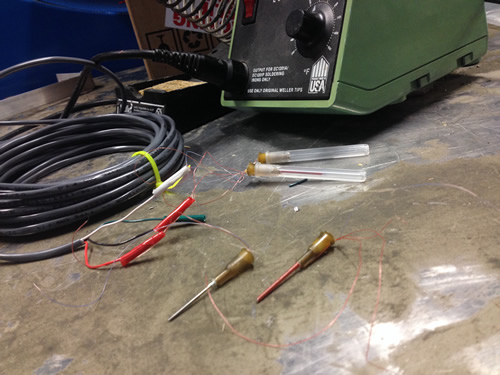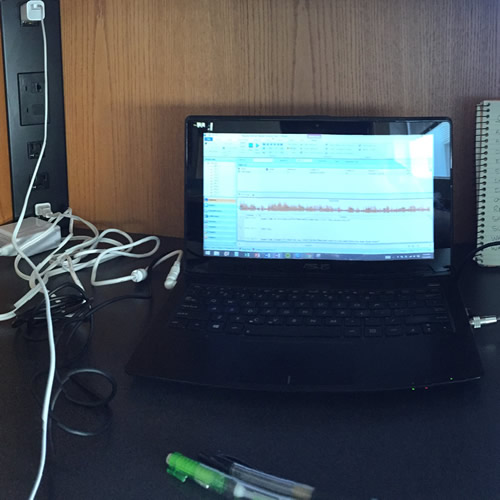iUTAH Undergraduate iFellows
Week 10 Recap
July 20-24, 2015
Kyle Ahn
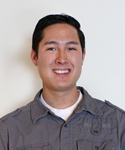
As my time with iUTAH winds down I can’t help but feel that it is unfortunate that we will part ways. I believe that my contribution to my lab group is at a maximum. When I come into the lab I am able to work independently while still producing quality results for my team. Having team members who are able to work independently of the professor’s creates efficiency that everyone can enjoy.
During this shortened work week (pioneer day) I was able to finish analyzing our samples from July. This process took me multiple weeks for our March samples. I truly wish the best for my team and our research moving forward.
Amanda Araujo
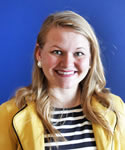
The first couple days of last week I spent my time participating in the group collecting activity in Red Butte Canyon with participants with USU, BYU, and the U. The latter half of the week I spent trying to make sure that final preparations, and last minute preparations for my project were taken care of so that someone can pick up where I left off with the least amount of confusion possible.
Viviane Baji

This week we were able to help physical scientists collect data along the Red Butte Creek watershed in Salt a Lake City! It was a really interesting experience to learn alongside other scientists and gain an appreciation for their work. The data will be used for analysis and publication within environmental chemistry, ecology, etymology, etc. I was also able to get a start on my presentation for next week's iFellow meeting.
Jesse Fleri

Joshua Gathro
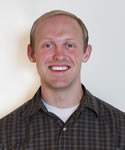
This week I was able to help out a bit in the lab and go with Trixie Rife and Dee Willey to set up a weather station for Trixie's project. Our final iFellow Symposium is coming up so I've been putting together my PowerPoint presentation as well. The Responsible Conduct of Research Training also took some time to complete but it was helpful to learn about research integrity.
Natasha Griffin
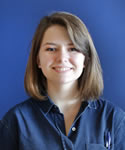
Sawyer Hill
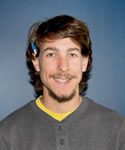
We spent the week manufacturing more sap flux sensors to install on secondary study trees this coming week. We also wrote a new program for the CR1000 dataloggers that we will be running the instrumentation for the secondary trees off of. We will be deploying the sap flux sensors and some needle thermocouples on four secondary trees in the engineering quad by one of the main study trees.
Joseph Ipson
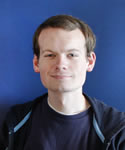
Matthew Johnson
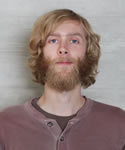
This week I took part in the all-hands data collection in the Red Butte Creek Catchment. I was able to learn from three different groups collecting water samples, taking vegetation transects, and studying stream ecology. It was such a great experience learning field methods in each discipline. It was also great to hike around in such an untouched area. A big thank you to everyone involved!
Heather King
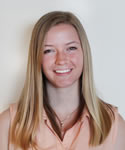
Week ten we checked up on all our devices we have installed, replaced the batteries, and downloaded the data. Most of the stations look good but we have had to adjust and replace parts on a few. We were able to measure and make additional sap flux sensors but we ran out of wire to finish making them so we ordered additional parts to complete the project. The process of making them has been interesting to learn and is pretty detailed since you are working with such small parts.
Don Long
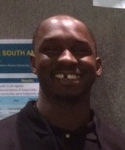
This is our final week. I'm really going to miss all the camaraderie I've developed here. I've established far more than business relationships. I've established a family. This week we finished up our dose-dependent project field work. We will now begin data analysis and input. I will still be collaborating with Beth and Michelle while I am back in Cedar City, UT via Internet and phone communication. The fun continues!

Final Field Day incubation
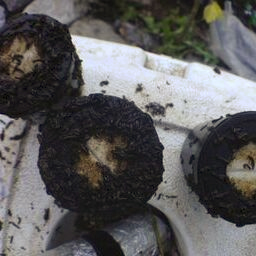
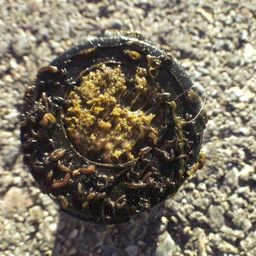
Masses of these larvae all over
Zack Oldroyd
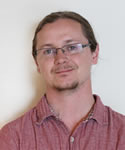
With our summer as iFellows is winding down. Andre and I spent the majority of the week coding the interviews we have been conducting all summer. Using a program called NVivo we each went through all of our transcribed interviews to see what was said. Every time an interviewer mentioned something we were coding for we would mark that interview as mentioning the subject. This process took a pretty big chunk of the week but is vital to what we are trying to do. We also devoted some time to preparing for our final presentation in Salt Lake City on July 29.
Elizabeth Tanner
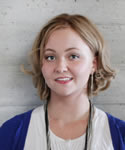
For week 10 of the iFellows program, I spent most of my time performing field and lab work concerning Red Butte Creek. I was helping a lab technician, Simone Jackson, with a research project she is doing that is concerned with food webs in streams. We collected mayflies, stoneflies, free-swimming caddis flies, algae, and leaves to get an idea of what organisms are eating. After collection, we measured and counted the flies. The samples will soon have their isotopes analyzed to see if there is any major difference among areas. This week was a lot of fun and we saw a lot of wildlife, including a mountain lion.

Scraping algae off of rocks
André Valle
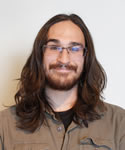
For my tenth week as an iFellow - I began to learn what social science coding was all about. In our project, we'd collected lots of samples of water voices and it was during this week that we began to manually code the transcriptions. In our scenario coding involved going through and selecting excerpts and content from the interviewees for our projects' selected topics through as many interview transcriptions possible. This was a computer-heavy week and it was a different change of pace for the project. We coded just over 80 interviews over the span of a few days.
Jamie Vawdrey
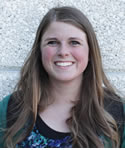
I cannot believe that we are already finishing up with our tenth week as iFellows! This week has been exciting because it's one of the last weeks of the program. I have enjoyed my time with iUTAH and I am excited to see upcoming projects!
Darianne Willey
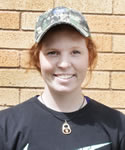
Shannon Williams
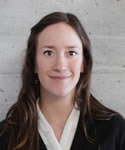
I spent a portion of the tenth week participating the Red Butte Creek data collection event. As a surprise to most everyone involved, my research group was featured in part on Channel 13 for media coverage. I spent the remainder of my week adding content to the research paper I've been developing this summer.
Margaret Wolf
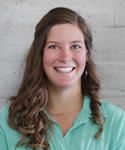
I started out the week helping with the All Hand Sampling effort in Red Butte Creek. On Monday I led a team of volunteers to teach them how to properly filter and split stream samples taken from urban sites in Salt Lake City neighborhoods. On Tuesday instead of gong with the stream chemistry team I joined the soil sampling team and leaned how to take soil samples p to 1M depth with an auger. These samples were going to be tested for isotopes to determine the ground water levels around the stream banks, this was all in the upper reaches of Red Butte Canyon. On Wednesday a team of us went door to door in an area known to have lots of ground water seeps in their back yards. Pictured below is a koi pond diverted from a ground water seep. We were able to talk to a lot of neighbors on Sunnyside Ave about their experiences dealing with a constant shift of seeps and springs and how they have dealt with them.
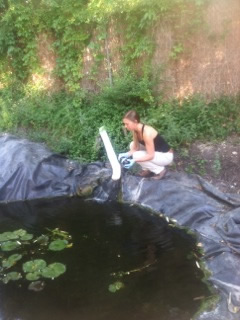
Mallory sampling the inflow to a Koi pond, directly from a groundwater seep

Ridley and Mallory taking a ground water sample

